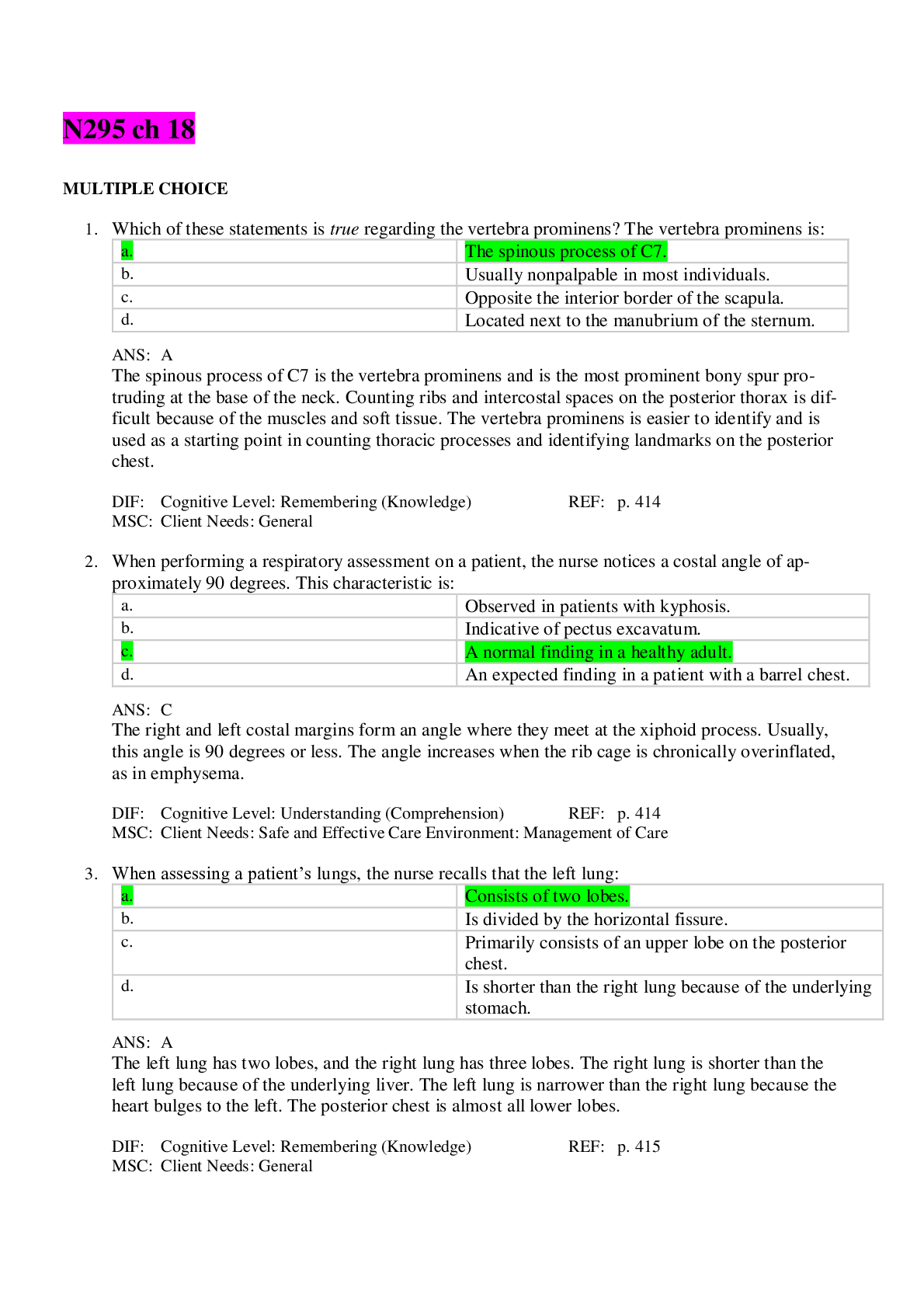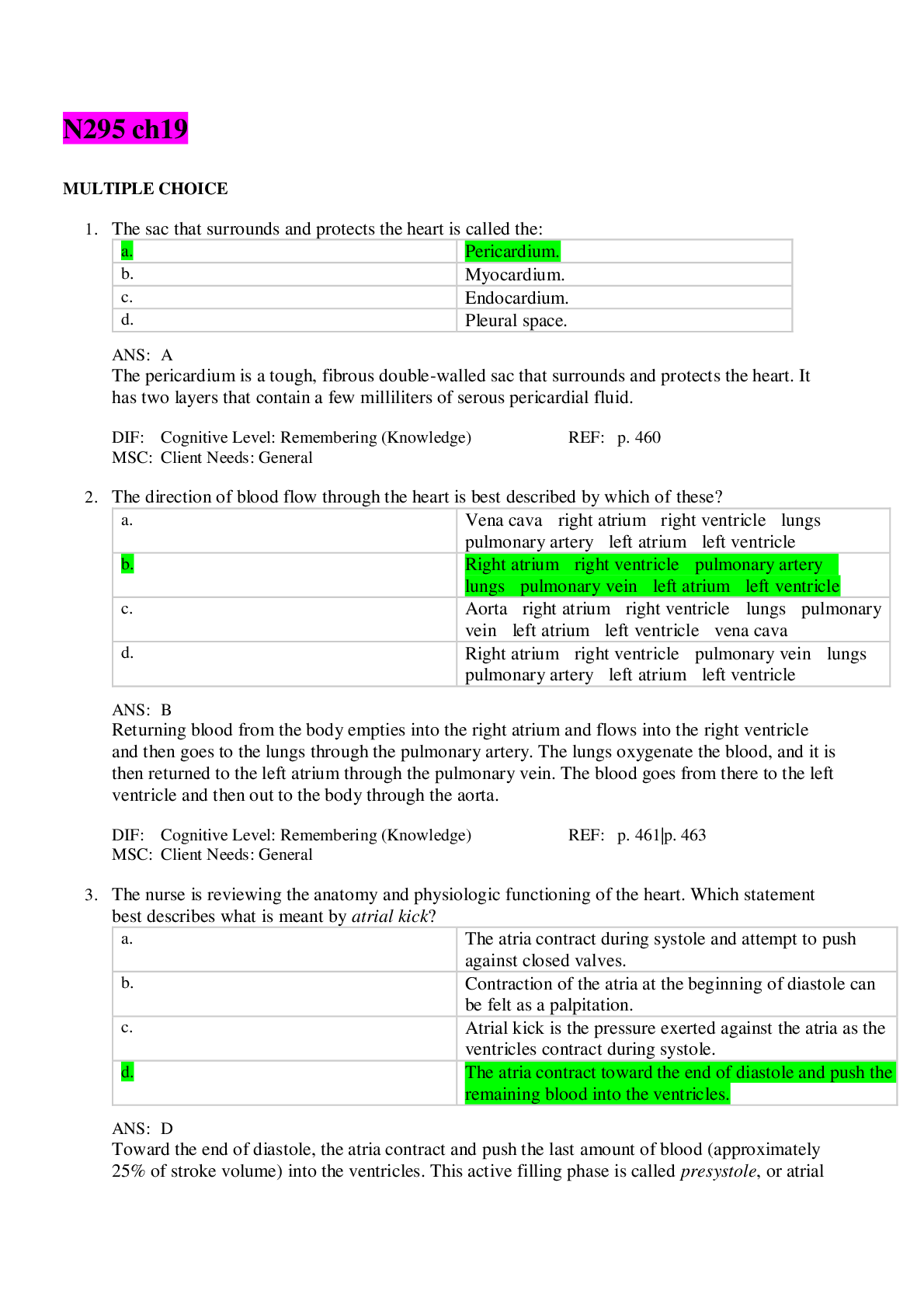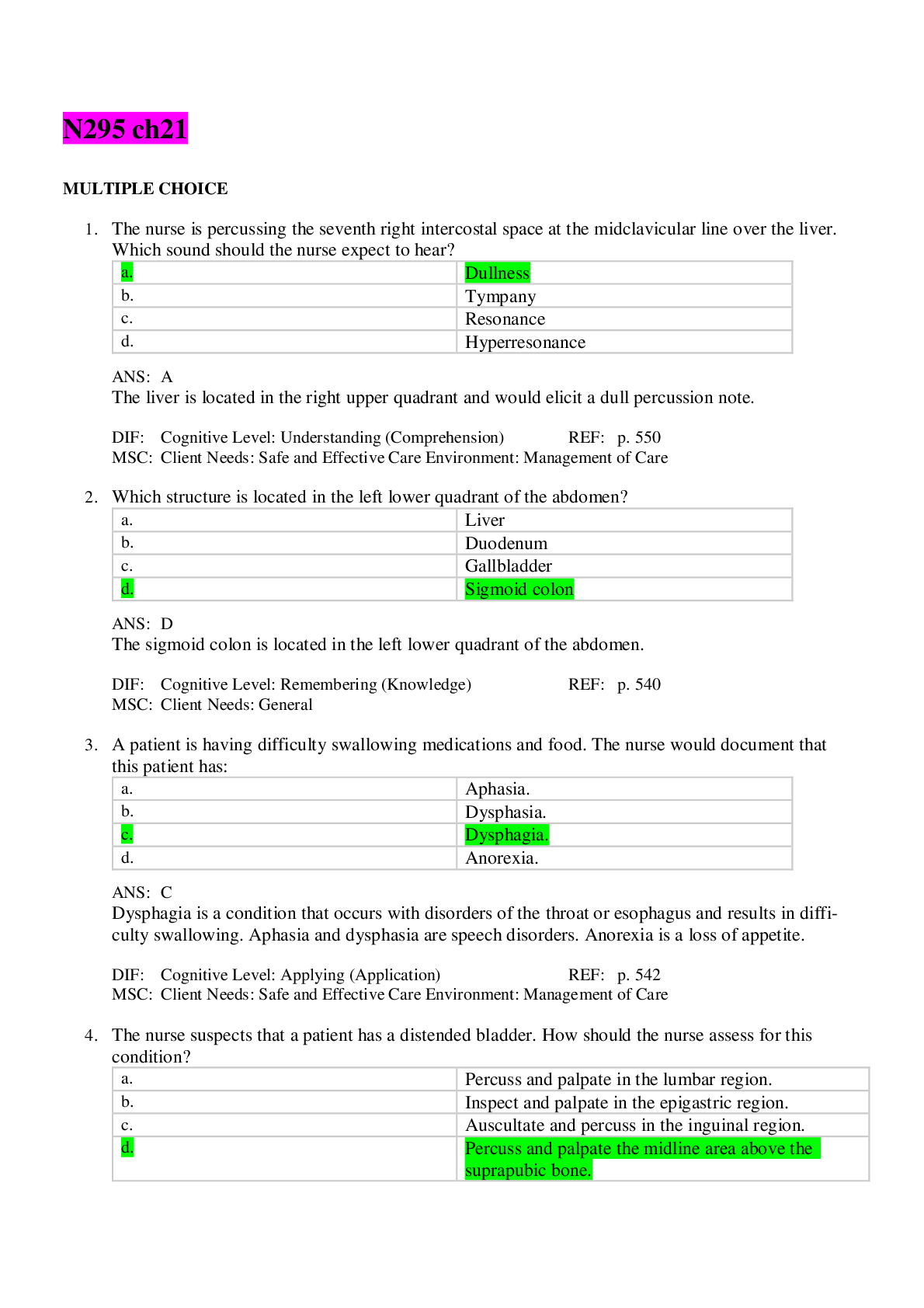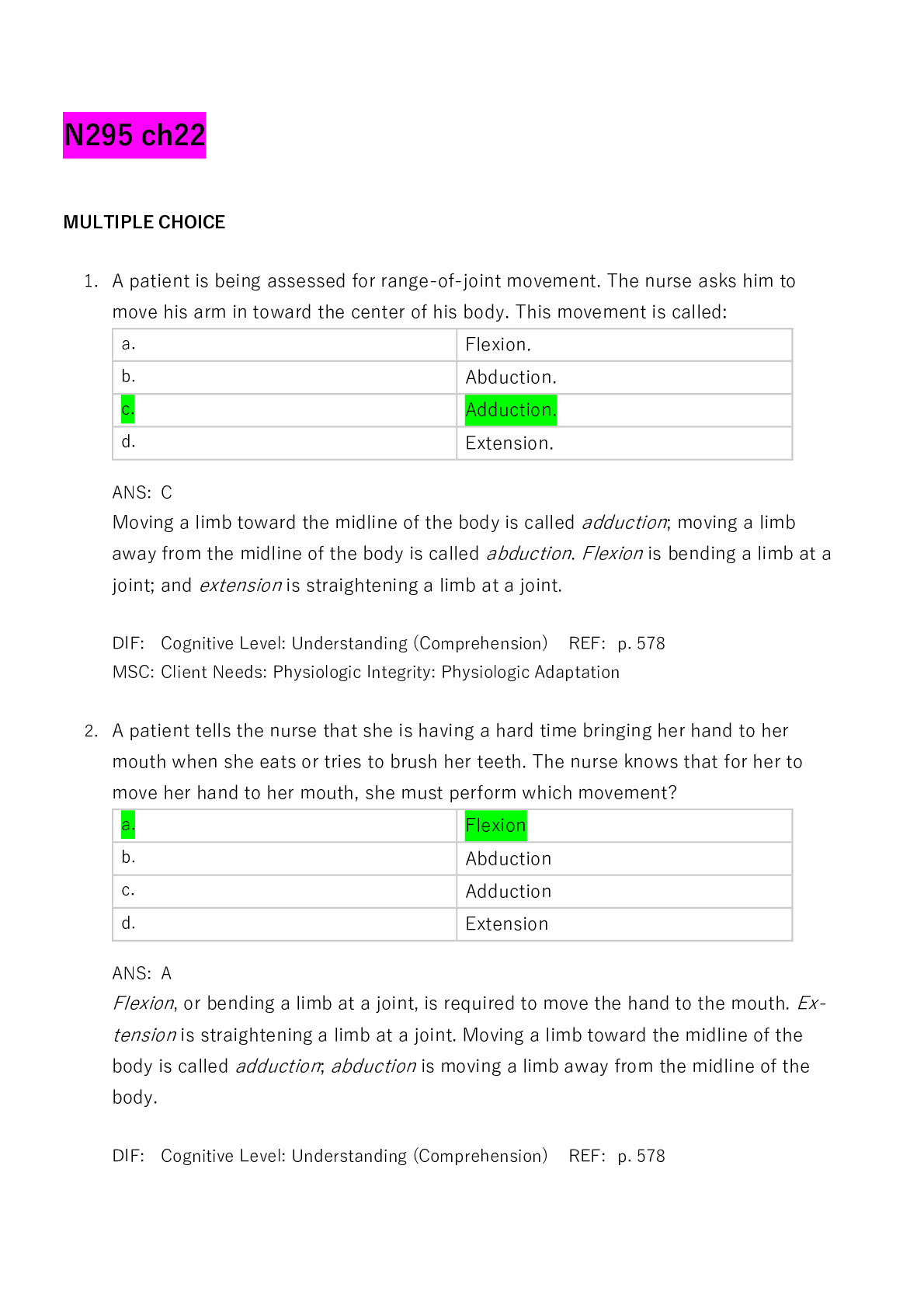PEDIATRIC NURSING > EXAM > [PEDIA] Inara Pretest and Posttest Exam - Questions and Answers (Complete Solutions) (All)
[PEDIA] Inara Pretest and Posttest Exam - Questions and Answers (Complete Solutions)
Document Content and Description Below
[PEDIA] Inara Pretest and Posttest Exam - Questions and Answers (Complete Solutions) Which of the following is true of Neonatal Resuscitation Protocol (NRP)? A. The time-bound parameters maybe alter... ed depending on the locality where the infant is born B. Local modifications such as kangaroo-care is acceptable C. The protocol applies only to preterm neonates D. Different parameters apply to term neonates A male term neonate develops Hyaline Membrane Disease. His mother most likely has a history of A. chronic hypertension B. corticosteroid use C. alcohol abuse D. diabetes mellitus You were shown a radiographic film of a preterm neonate. You suspected bronchopulmonary dysplasia because of the presence of interstitial thickening and A. areas of focal hyperexpansion B. air bronchograms C. ground-glass appearance D. infiltrates A 56-day-old female preterm neonate born at 33 weeks AOG is sent home on oxygen supplementation at 2 LPM by nasal cannula. Her BPD is therefore classified as A. moderate B. severe C. mild D. indeterminate; more data are needed Delayed closure of a patent ductus arteriosus in a preterm neonate is often associated with A. hypotension B. suppression of prostaglandin release C. metabolic alkalosis D. pulmonary vasodilation A preterm neonate whose age of gestation is estimated at 33 weeks is classified as A. ELGAN B. Extremely preterm C. Very preterm D. Late preterm The most common cause of apnea among preterms is A. central B. mixed C. periodic breathing D. obstructive Which of the following is a known risk factor for the development of asymmetric IUGR? A. Chronic maternal hypertension B. Chromosomal abnormality C. Maternal alcohol use D. TORCH infection Turning off the air-conditioning units as soon as the infant is delivered via cesarean section minimizes heat loss from A. evaporation B. radiation C. conduction D. convection The most effective strategy of preventing enterocolitis among preterm neonates is to A. give human milk once neonates is stabilized B. use proton pump inhibitors to less the acidity of the stomach C. to start parenteral supplementation on the 1st day of life D. ensure control of infection by prolonged antibiotic use It is considered the primary cause of Respiratory Distress Syndrome (RDS). A. Low birth weight B. Surfactant deficiency C. Prematurity D. Multiple births At what age (in days) will you expect physiologic jaundice in preterms to disappear? A. 2-3 B. 10-12 C. 1-4 D. 7-9 A 2 weeks old male preterm male neonate (born at 32 weeks AOG) is observed to have lethargy, temperature instability and persistent residuals after each feed of breastmilk. There was abdominal distention; CBC shows neutropenia and thrombocytopenia. X-ray of the abdomen shows air in the bowel walls. Which of the following is the greatest risk factor for the development of this condition? A. Enteral feeding B. Prematurity C. Late onset sepsis D. Prolonged NICU stay Bronchopulmonary dysplasia is a disease primarily of infants with birthweight <1,000 grams who were born at <28 wk gestation and experienced progressive respiratory failure over the 1st weeks of age. Which of the following is a common and increasingly recognized complication of BPD? A. Neonatal pneumonia B. Persistent PDA C. Respiratory failure D. Pulmonary hypertension A 3 days old female neonate on the 3rd day of life is successfully weaned from mechanical ventilatory support after receiving surfactant therapy. Later that day, the nurse on duty noticed the infant to be lethargic, with increasing oxygen requirement to maintain the desired oxygen saturation. The clerk on duty suspected patent ductus arteriosus. Which of the following is consistent with this condition? A. Hypercarbia B. Pulmonary congestion C. Cardiomegaly D. All of the options can be manifested in a patient with PDA The risk of developing retinopathy of prematurity and bronchopulmonary dysplasia must always be a consideration when administering oxygen therapy to a premature infant. For a 975-gram infant who is now clinically stable after initial resuscitation, which of the following should be the target oxygen saturation? A. 95-98% B. 95-100% C. 90-95% D. 80-90% A male neonate born by spontaneous vaginal delivery received an Apgar score of 7,9 at 1 and 5 minutes respectively. His preductal SpO2 after this latest assessment should be within the range of A. 70-75% B. 65-70% C. 80-85% D. 75-80% Baby Girl A, a live female preterm neonate was born via normal spontaneous delivery, Apgar score 8,9, Ballard's score 35 weeks, birthweight 1,900 grams, AGA. Her mother is HBsAg-reactive. Which of the following immune-prophylaxis protocols will you give to Baby A? A. Hep B vaccine + Hep B Ig one month after discharge B. Hep B vaccine only to be given prior discharge C. Hep B vaccine within 7 days + Hep B Ig prior discharge D. Hep B vaccine + Hep B Ig within 12 hours of birth Mature levels of surfactant are expected after __ weeks of gestation. A. 28 B. 35 C. 38 D. 32 Which of the following is characteristic of central apnea? A. Associated with pharyngeal instability B. Cessation of breathing for less than 20 seconds with bradycardia and cyanosis C. Absence of chest wall motion D. Uncoordinated tongue and upper airway muscles Which of the following is associated with good outcome in patients with HIE? A. Seizures B. Inability to tolerate oral feedings C. Hypotonia persisting for 1 week D. Normal background brain activity by 7 days of life A newborn who fails to breathe in the 1st 30 seconds of life is presumed to have A. respiratory failure B. primary apnea C. asphyxia D. secondary apnea An Apgar score is assigned at 1 and 5 minutes of life. The target preductal SpO2 at 5 minutes is A. 65-70% B. 80-85% C. 75-80% D. 70-75% Appropriate management of HIE include A. aggressive fluid management to maintain mean arterial pressure B. avoidance of cerebral hypoperfusion C. hyperthermia D. cranial hypothermia Perinatal asphyxia is characterized by A. multiple organ dysfunction B. persistent Apgar score of 7 for longer than 5 minutes C. cerebrovascular sequelae D. umbilical venous pH less than 7 The C in Neonatal Resuscitation Protocol means that circulatory support should be provided by A. IV boluses B. Blood transfusion C. Chest compression D. Inotropes Problems in the perinatal period requiring resuscitation of newborn are mostly _______ in origin. A. respiratory B. cerebral C. cardiac D. renal Delayed apoptotic brain cell death is characterized by A. activation of caspases B. sodium overload C. calcium overload D. high oxygen radical content [Show More]
Last updated: 3 weeks ago
Preview 1 out of 35 pages
Instant download
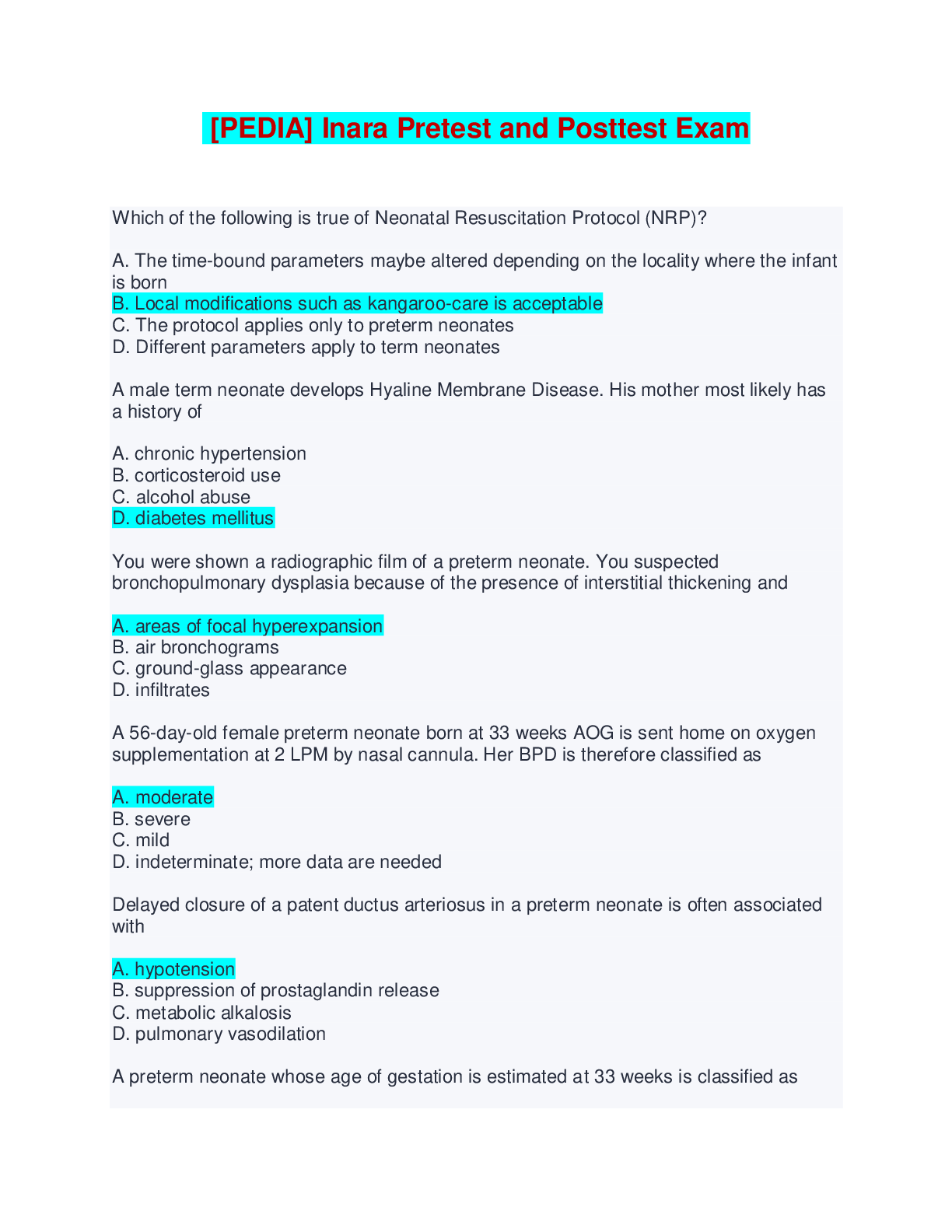
Buy this document to get the full access instantly
Instant Download Access after purchase
Add to cartInstant download
Reviews( 0 )
Document information
Connected school, study & course
About the document
Uploaded On
May 13, 2024
Number of pages
35
Written in
Additional information
This document has been written for:
Uploaded
May 13, 2024
Downloads
0
Views
8



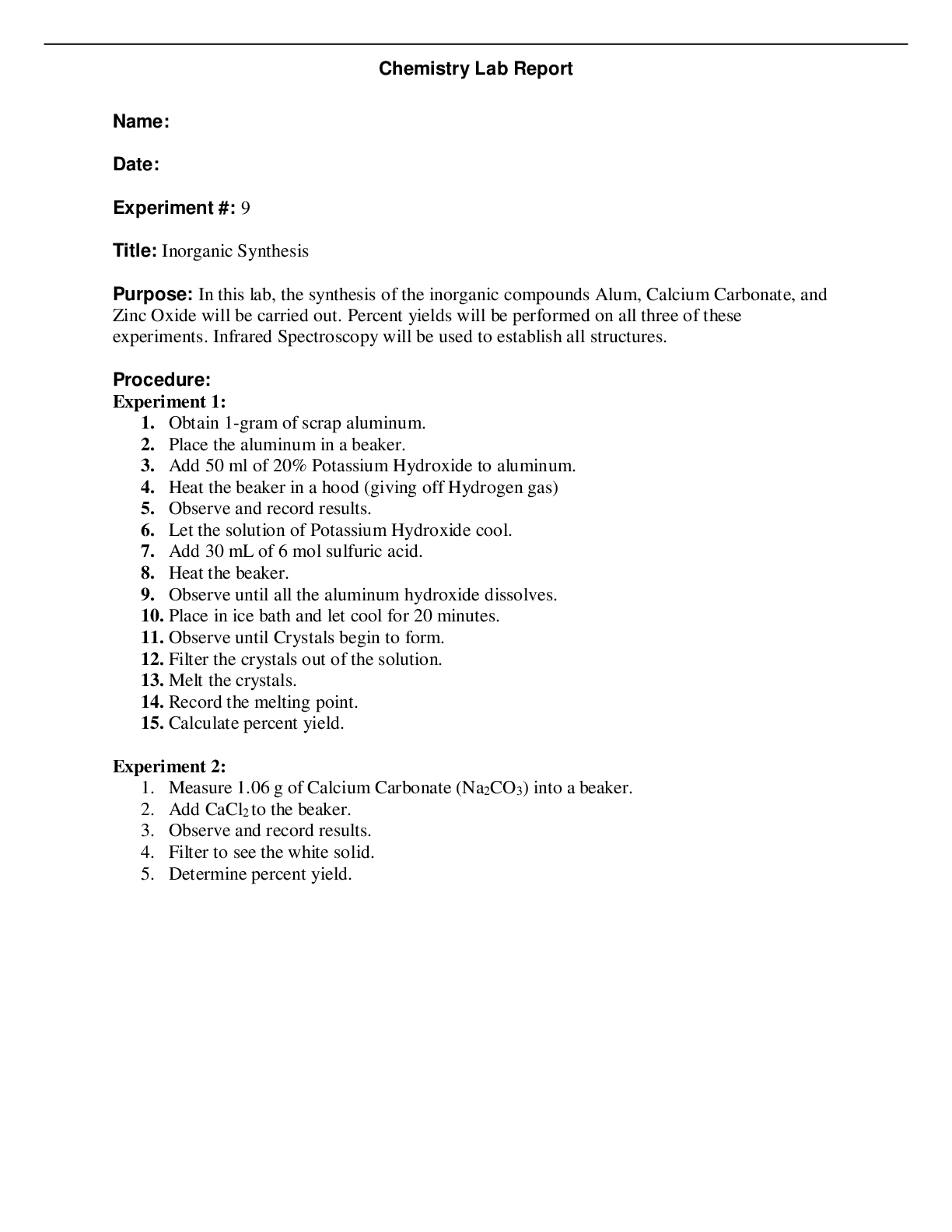
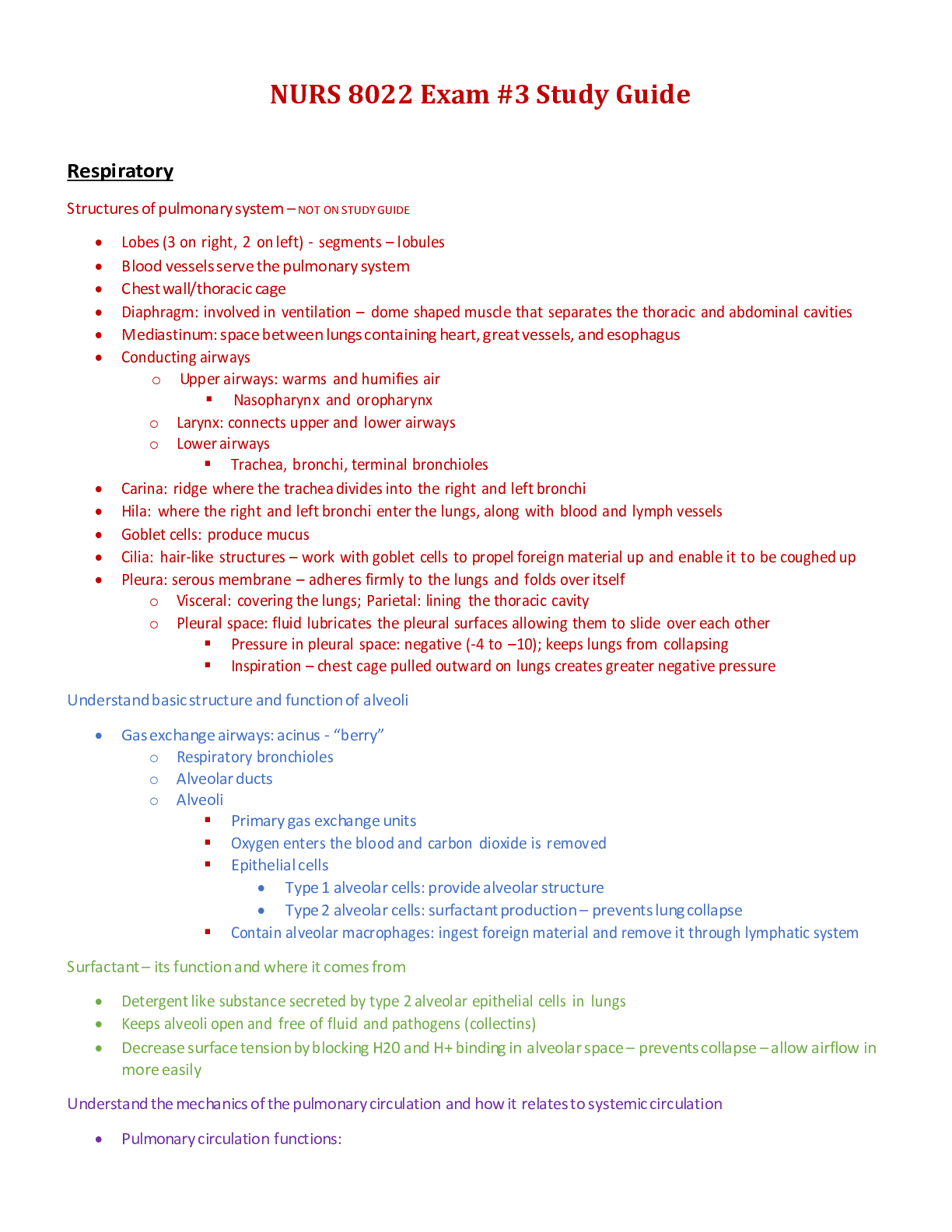

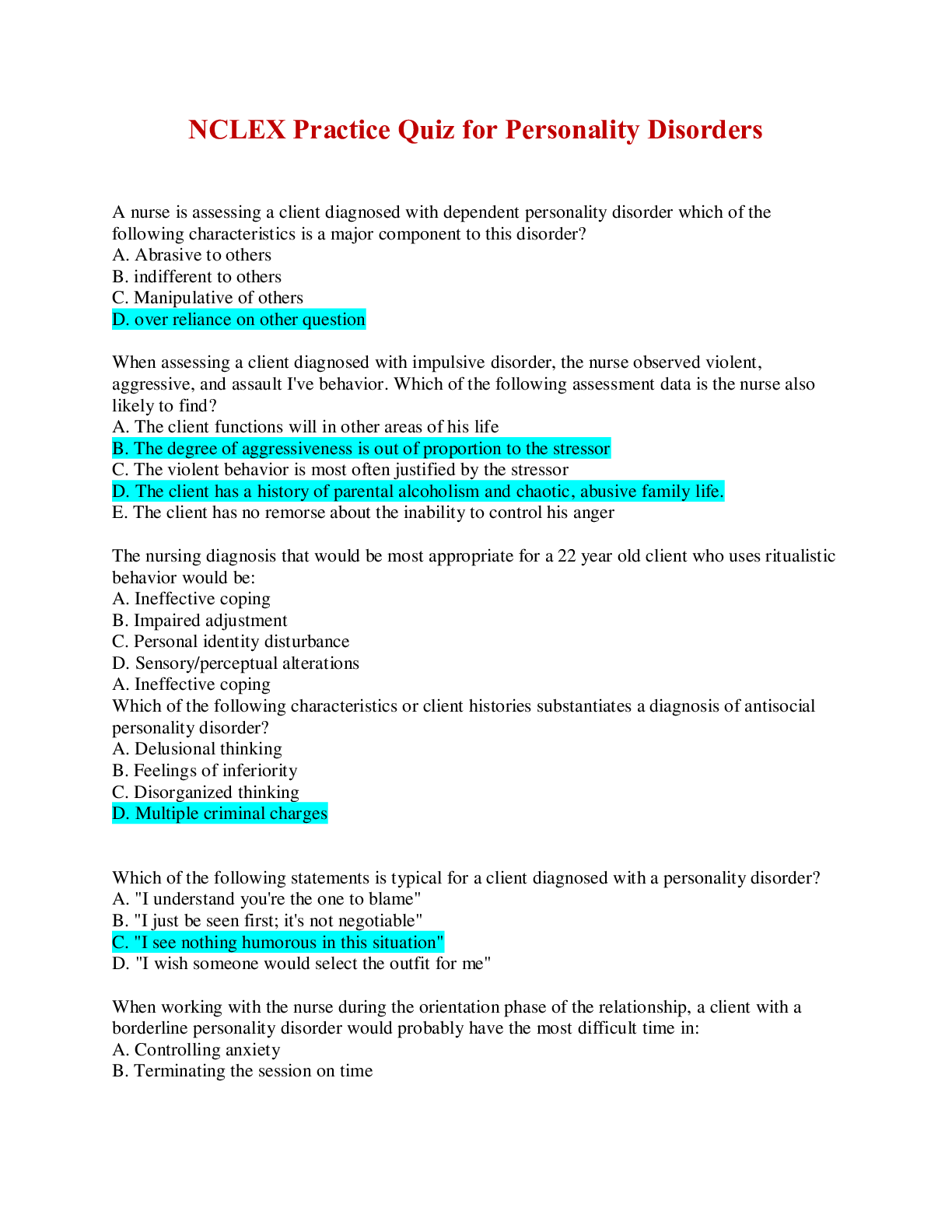



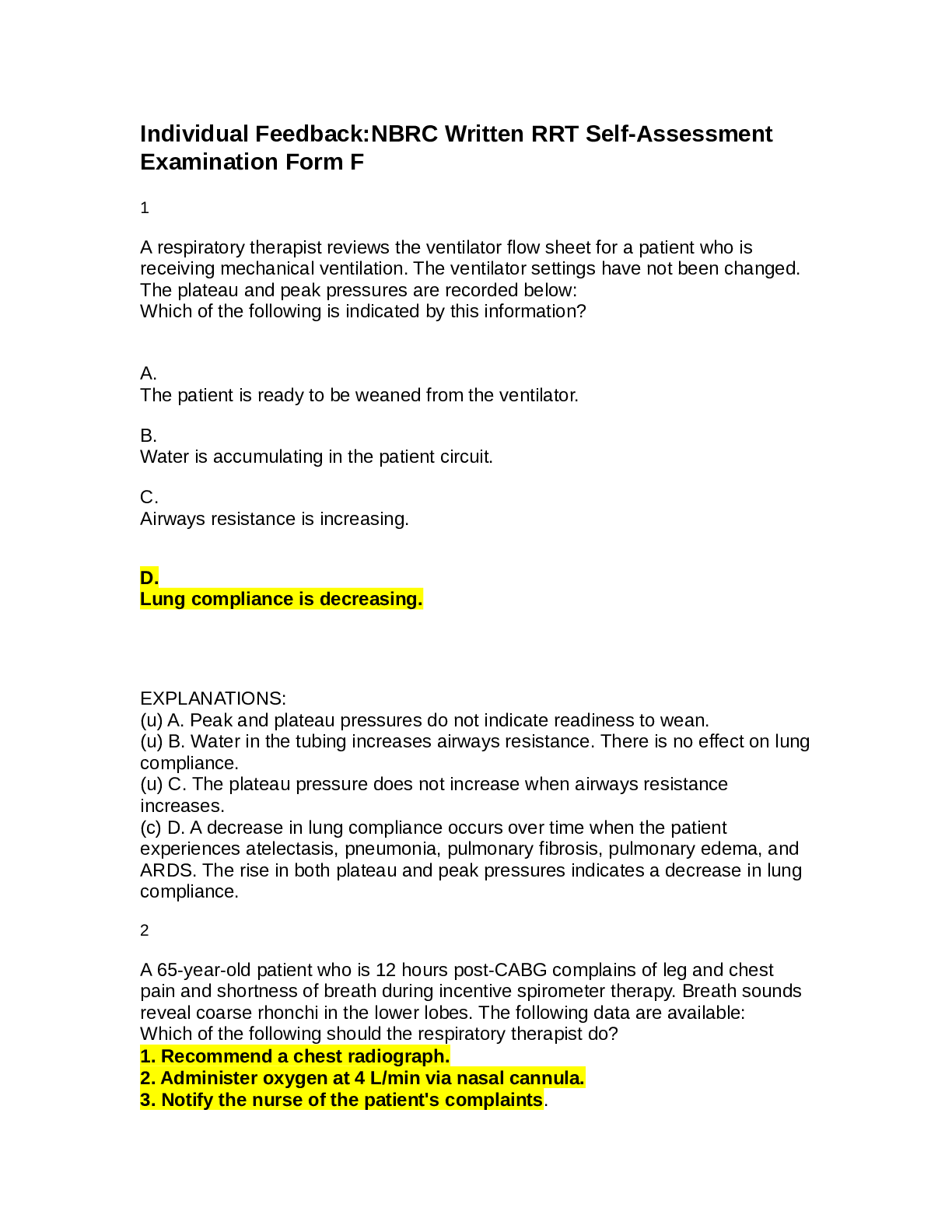
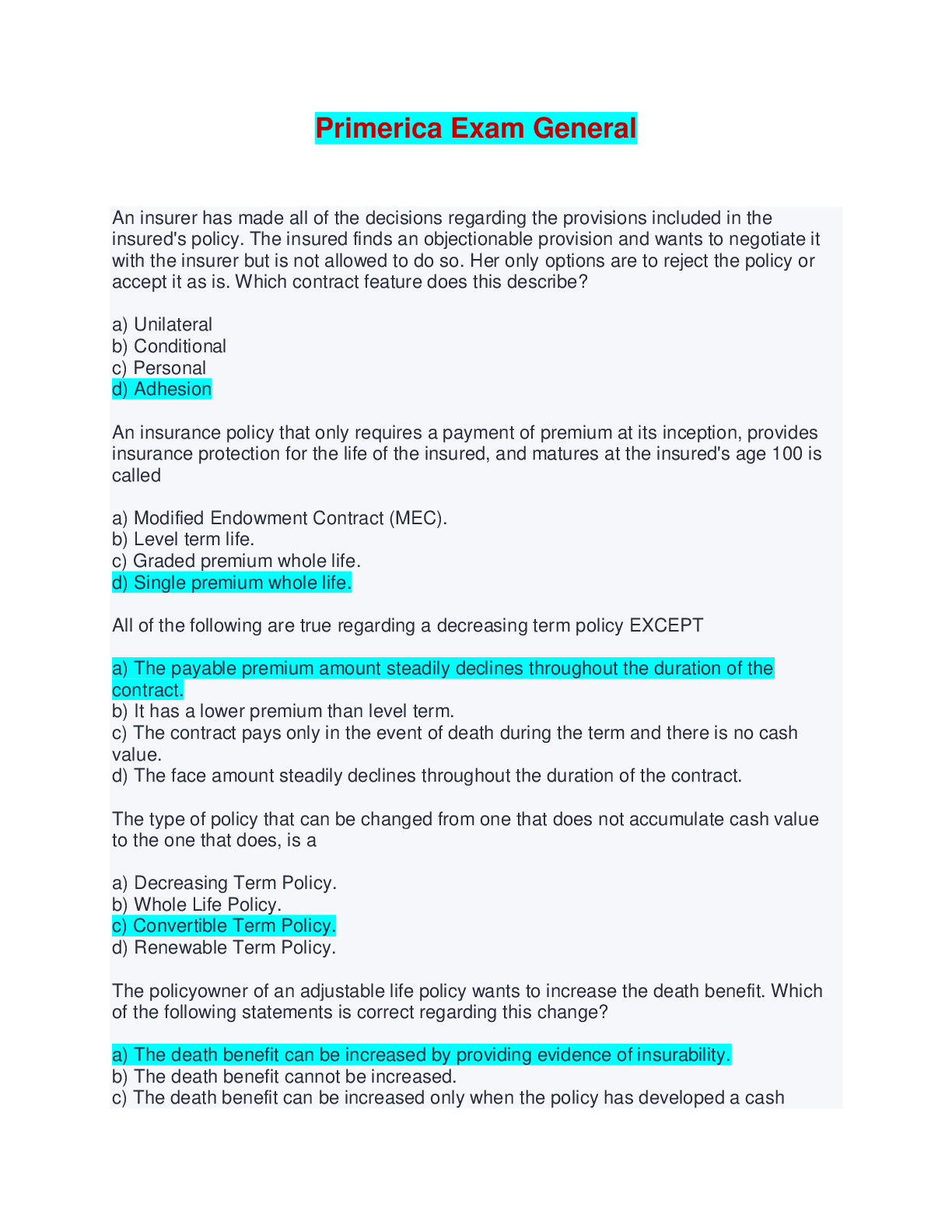

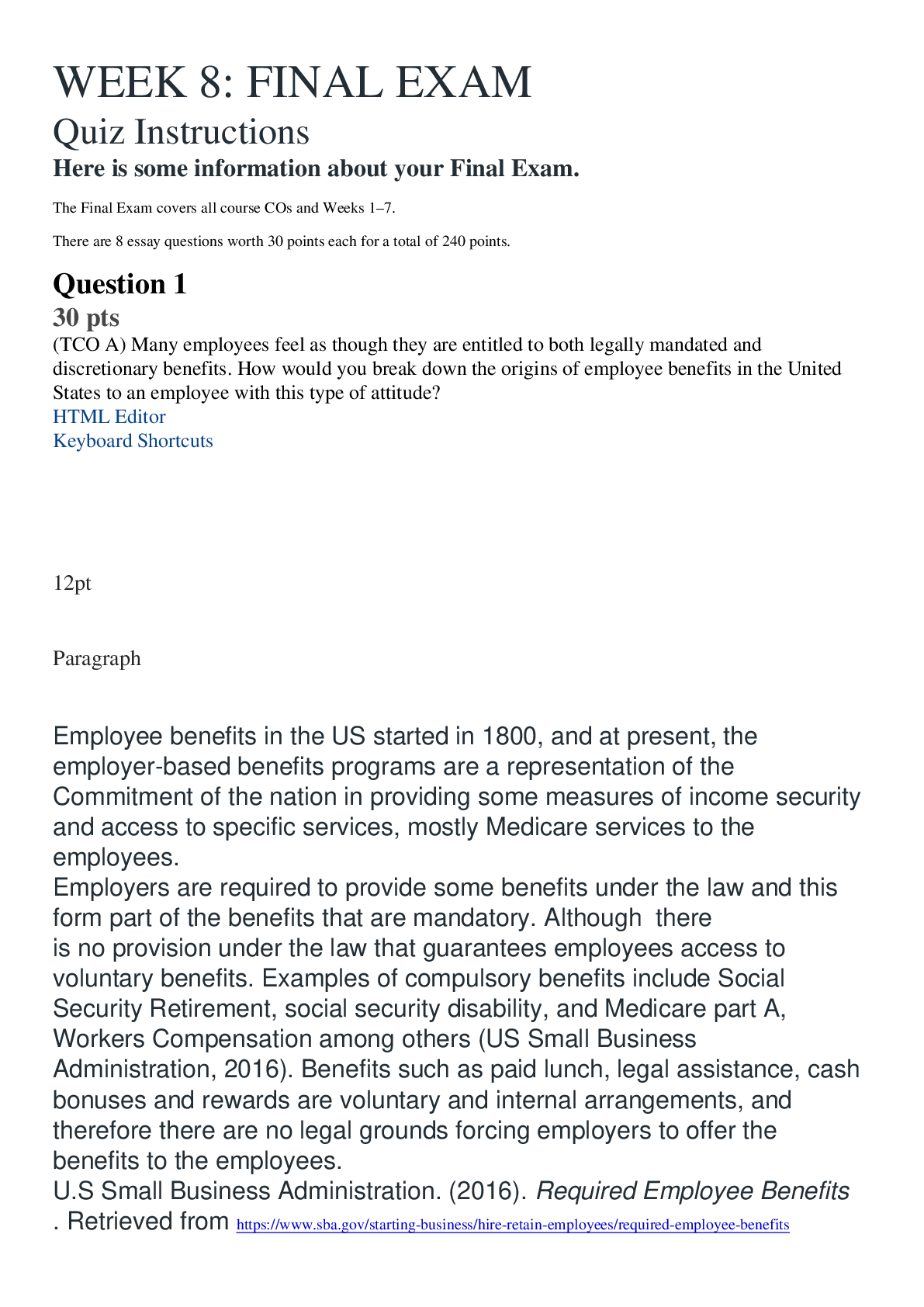
.png)
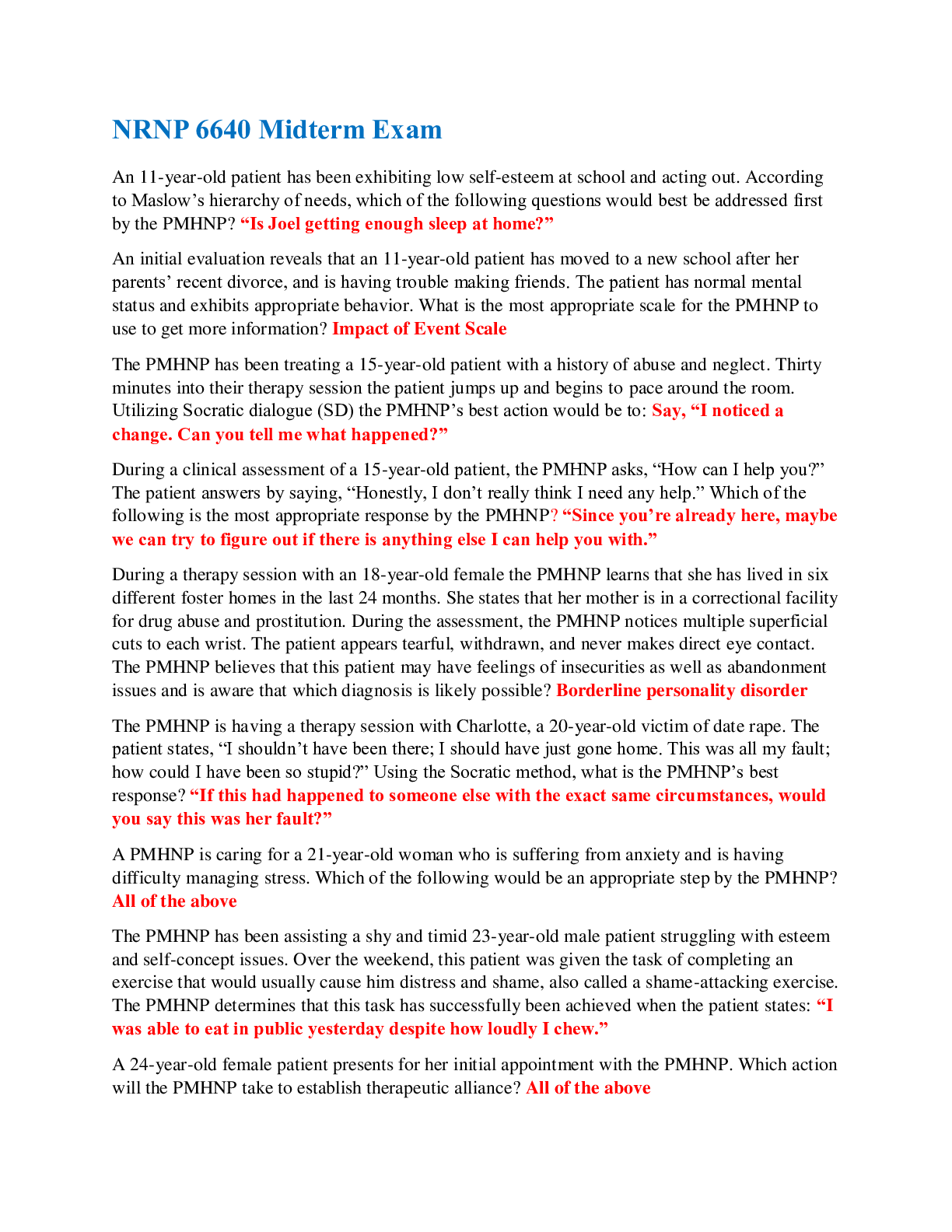
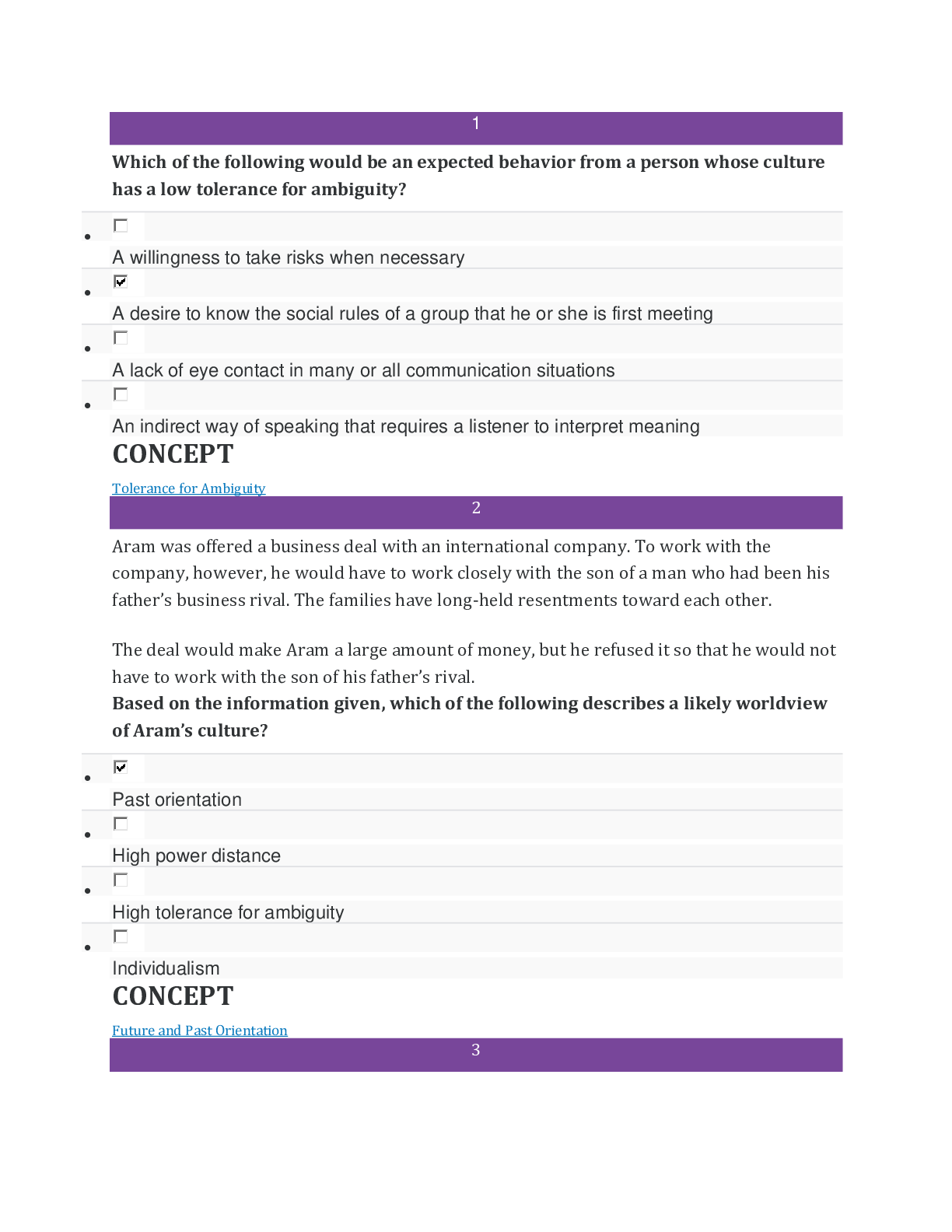

.png)
.png)
